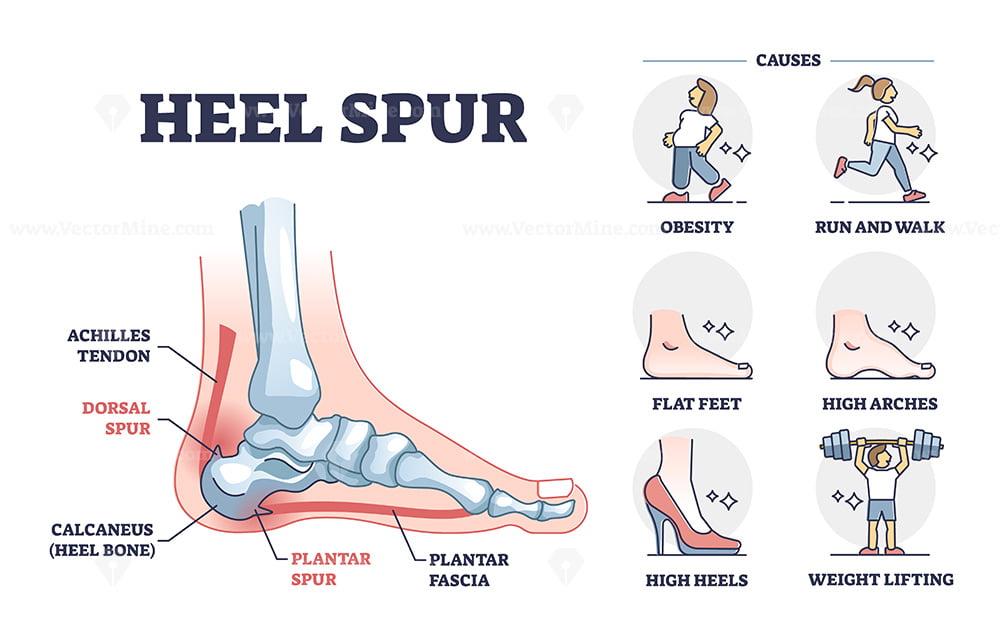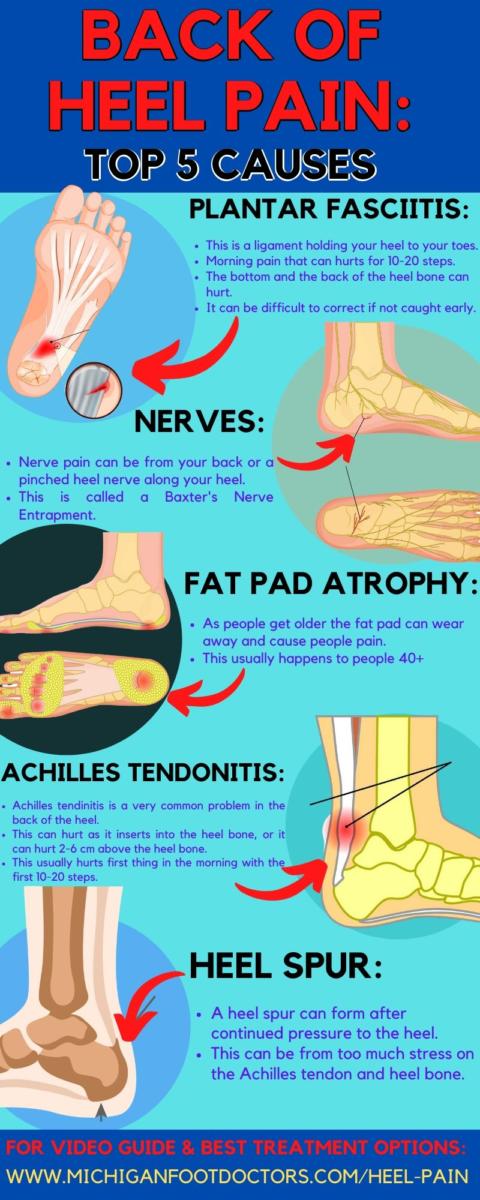Bone Spur in Heel and Achilles Tendon: The 2 Common Types of Heel Spurs
What are the two common types of heel spurs? What are the causes and symptoms of heel spur syndrome and insertional Achilles tendonitis?
The Two Common Types of Heel Spurs
Bone spurs can develop on almost any bone, including the heel, and sometimes produce pain and other symptoms. Two painful heel conditions are associated with the formation of bone spurs:
Heel Spur Syndrome
Heel spur syndrome involves the formation of a bone spur at the bottom of the heel, on the sole of the foot. People who have a common foot condition called plantar fasciitis can develop these spurs, which are often referred to as heel spurs or calcaneal spurs. Plantar spurs are hook-like and are normally associated with heel spur syndrome.
Bone spurs that develop with plantar fasciitis or Achilles tendonitis are sometimes called by their medical name, enthesophytes. Heel spurs develop as a bone’s response to stress from straining foot muscles and ligaments, over-stretching the plantar fascia, and repeated tearing of the thin lining of the heel bone. Heel spurs often occur in athletes participating in sports involving running and jumping, and are also associated with age, obesity, and osteoarthritis.
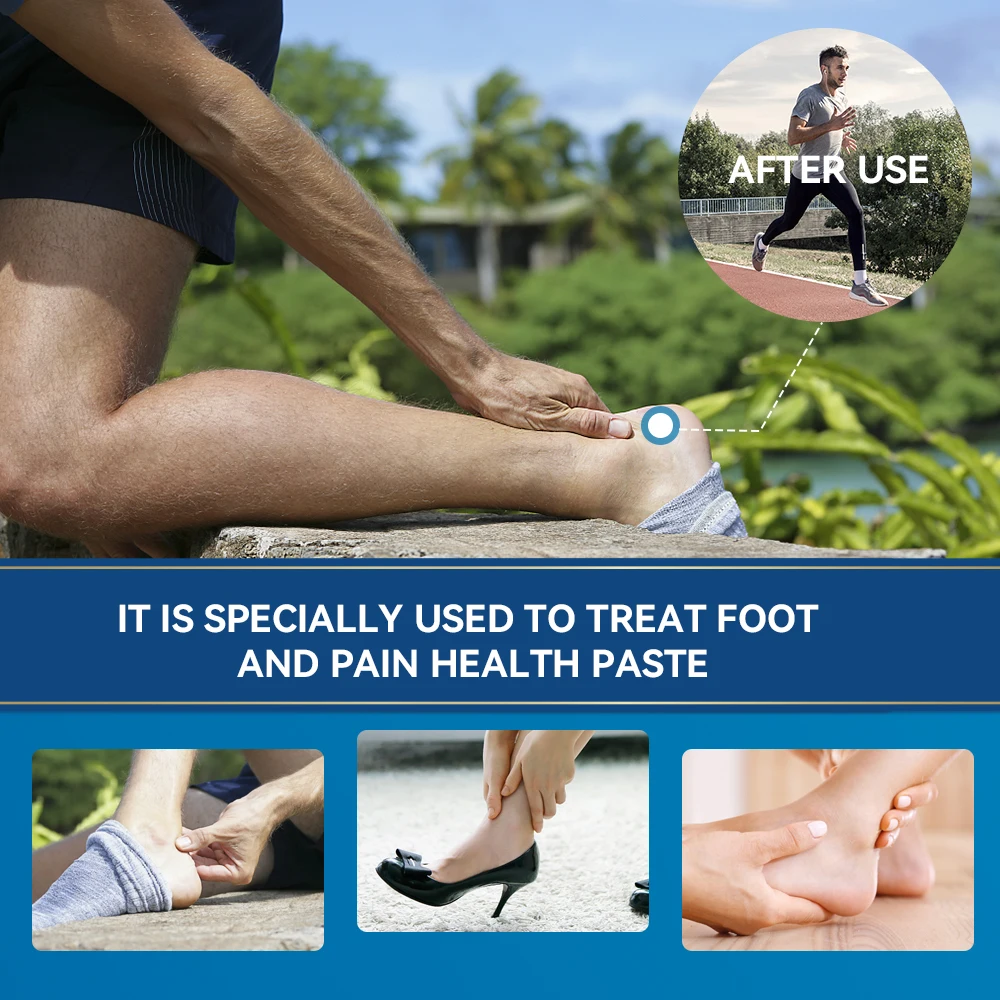
The good news is that the vast majority of heel spurs usually do not cause pain. In fact, only 5% of people with heel spurs have foot pain.
Insertional Achilles Tendonitis
Insertional Achilles tendonitis affects the back of the heel, where the Achilles tendon inserts into the heel bone. The bone spur gradually develops around the tendon where it inserts into (attaches to) the bone. The bone spur can irritate the Achilles tendon, potentially causing more tendon damage and pain. In addition, the inflamed and/or damaged portion of the Achilles tendon can calcify, or harden.
Insertional Achilles tendonitis is associated with decreased ankle range of motion and increasing age—people who are affected are often in their 40s, 50s, or 60s. Achilles tendonitis usually develops gradually and is not linked with a single incident or trauma. Jumping and running can exacerbate this condition, along with negotiating stairs, making inflammation and heel pain worse.
Causes and Risk Factors for Heel Spurs
What causes heel spurs to develop, and who is at risk?

Heel spurs are a response to stress on the foot muscles and ligaments, often caused by conditions like plantar fasciitis or Achilles tendonitis. Factors that increase the risk of developing heel spurs include:
- Participating in sports with a lot of running and jumping
- Increased age
- Obesity
- Osteoarthritis
Symptoms of Heel Spur Syndrome vs. Insertional Achilles Tendonitis
How can you tell the difference between the two types of heel spurs?
Heel spur syndrome causes pain at the bottom of the heel, while insertional Achilles tendonitis causes pain at the back of the heel where the Achilles tendon attaches to the bone. Heel spur syndrome is often associated with plantar fasciitis, while insertional Achilles tendonitis is linked to decreased ankle mobility and older age.
Diagnosing Heel Spurs
How are heel spurs diagnosed?
Heel spurs are typically diagnosed through a physical examination and imaging tests like X-rays or MRI scans. The doctor will assess the location and nature of the patient’s heel pain to determine whether it is due to a heel spur or another condition like plantar fasciitis or Achilles tendonitis.
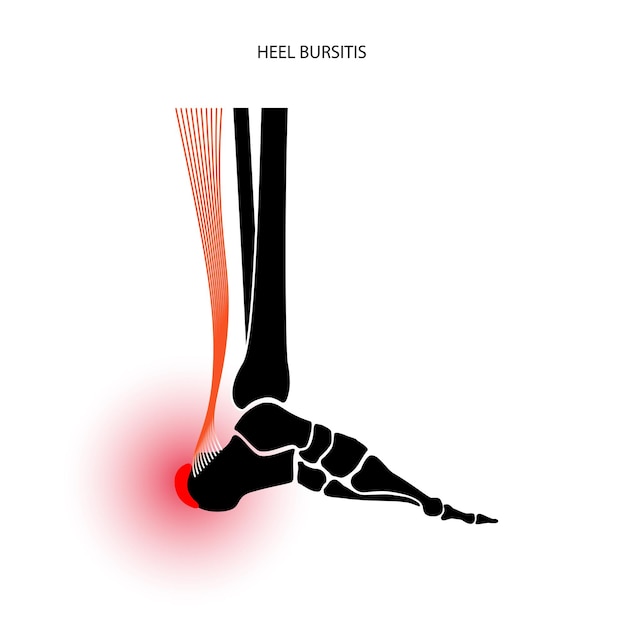
Treatment for Heel Spurs
What are the treatment options for heel spurs?
The good news is that the majority of heel spurs do not require any treatment, as they are often asymptomatic. For those with painful heel spurs, treatments may include:
- Rest, ice, and anti-inflammatory medications to reduce inflammation
- Stretching and physical therapy exercises
- Orthotic devices or supportive shoes to reduce stress on the heel
- Corticosteroid injections to alleviate pain
- In severe cases, surgery to remove the heel spur
Preventing Heel Spurs
How can heel spurs be prevented?
While it’s not always possible to prevent heel spurs, taking steps to maintain foot health and reduce stress on the heel can help. This includes:
- Wearing proper, supportive footwear
- Maintaining a healthy weight
- Stretching and strengthening the foot and calf muscles
- Avoiding high-impact activities that put excessive stress on the heels
By understanding the two common types of heel spurs, their causes, symptoms, and treatment options, individuals can take proactive steps to manage and potentially prevent this painful condition.
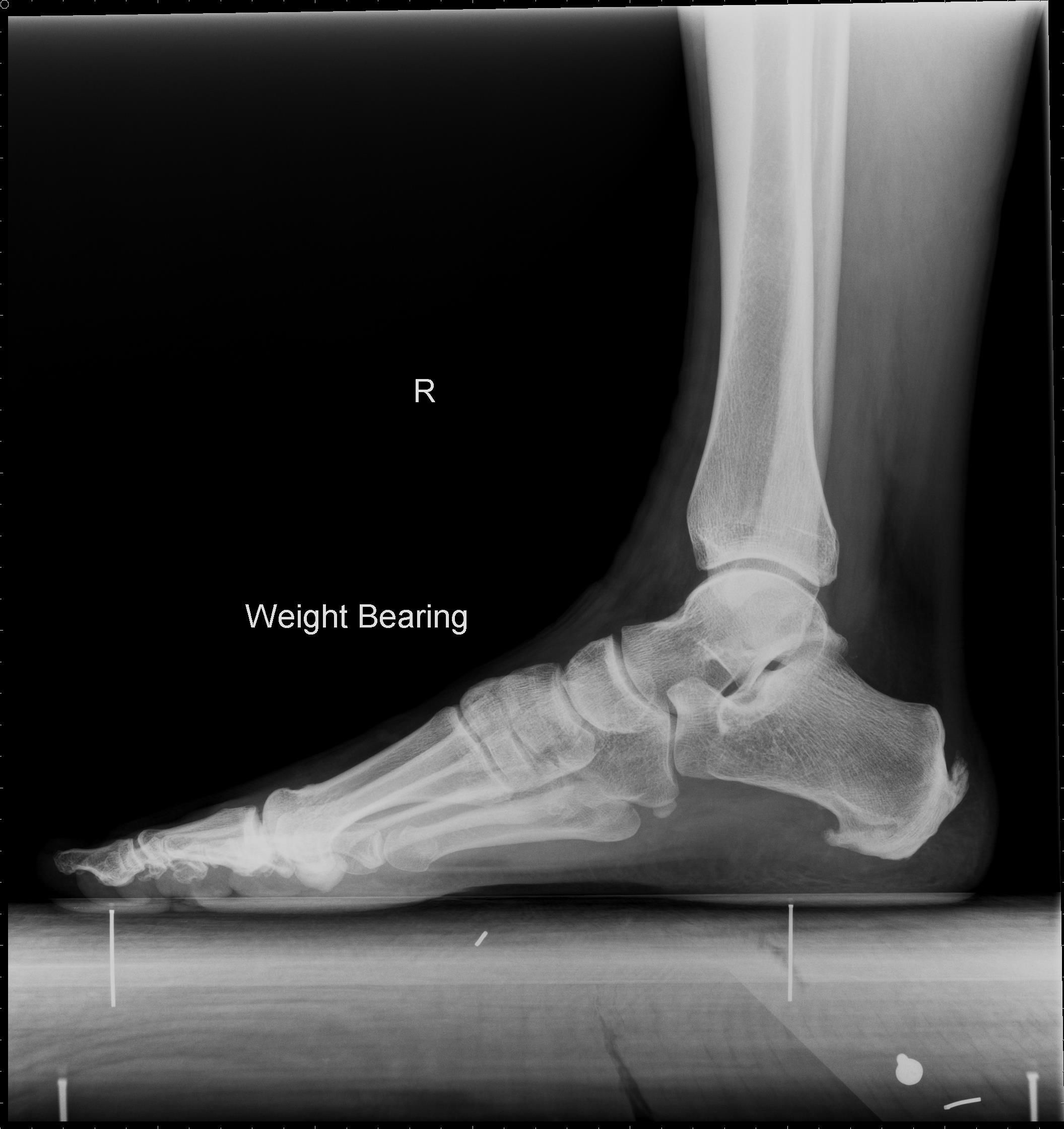
The 2 Common Types of Heel Spurs
Bone spurs can develop on almost any bone, including the heel, and sometimes produce pain and other symptoms. Two painful heel conditions are associated with the formation of bone spurs:
- Heel spur syndrome involves the formation of a bone spur at the bottom of the heel, on the sole of the foot. People who have a common foot condition called plantar fasciitis can develop these spurs, which are often referred to as heel spurs or calcaneal spurs.
- Insertional Achilles tendonitis can be associated with bone spurs at the back of the heel, where the Achilles tendon inserts into the bone.
Two painful heel conditions are associated with the formation of bone spurs. Dorsal spurs are commonly related to insertional Achilles tendonitis, and plantar spurs are normally associated with heel spur syndrome.
Bone spurs that develop with plantar fasciitis or Achilles tendonitis are sometimes called by their medical name, enthesophytes.
See Plantar Fasciitis Diagnosis
Bone spurs are common, and the likelihood of developing them increases with age.
1
Bone Spur. Reed Group MD Guidelines website. http://www.mdguidelines.com/bone-spur Accessed July 8, 2016.
See What Is a Bone Spur?
advertisement
Heel Spur Syndrome
Plantar spurs are hook-like and are normally associated with heel spur syndrome.
Heel spur syndrome is a condition associated with heel spurs, bony protrusions that grow on the bottom of the heel. A heel spur forms where the plantar fascia—band of fibrous tissue stretching along the bottom of the foot—connects to the heel bone. The spur grows in the direction of the plantar fascia and often forms a hook-like shape.
See Is Heel Pain Caused by Heel Spurs or Plantar Fasciitis?
Heel spurs develop as a bone’s response to stress from:
- Straining foot muscles and ligaments
- Over-stretching the plantar fascia
- Repeated tearing of the thin lining of the heel bone
There is good news as it relates to these heel spurs.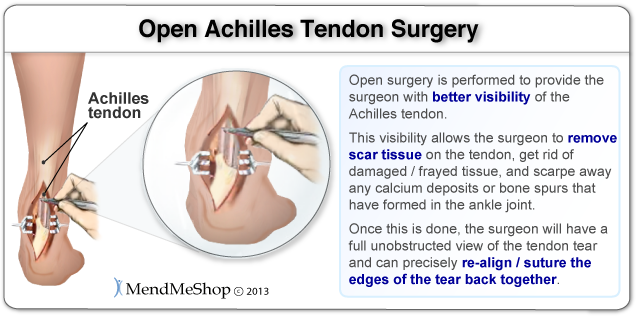 The vast majority of heel spurs usually do not cause pain. In fact, only 5% of people with heel spurs have foot pain.
The vast majority of heel spurs usually do not cause pain. In fact, only 5% of people with heel spurs have foot pain.
2
Plantar Fasciitis and Bone Spurs. American Academy of Orthopedic Surgeons website. http://orthoinfo.aaos.org/topic.cfm?topic=A00149&webid=23D4 Last reviewed June 2010. Accessed July 8, 2016.
Heel spurs often occur in athletes participating in sports involving running and jumping. They are also associated with age, obesity, and osteoarthritis.
See Common Running Injuries: Foot Pain
Insertional Achilles Tendonitis
Dorsal spurs are commonly related to insertional Achilles tendonitis.
Insertional Achilles tendonitis affects the back of the heel, where the Achilles tendon inserts into the heel bone. The bone spur gradually develops around the tendon where it inserts into (attaches to) the bone.
See Achilles Tendonitis and Tendon Injuries
The bone spur can irritate the Achilles tendon, potentially causing more tendon damage and pain. In addition, the inflamed and/or damaged portion of the Achilles tendon can calcify, or harden.
In addition, the inflamed and/or damaged portion of the Achilles tendon can calcify, or harden.
See Causes and Risk Factors for Achilles Tendon Damage
advertisement
Insertional Achilles tendonitis is associated with decreased ankle range of motion and increasing age—people who are affected are often in their 40s, 50s, or 60s.
3
Insertional Achilles Tendinitis. American Orthopaedic Foot & Ankle Society.https://www.aofas.org/footcaremd/conditions/ailments-of-the-ankle/Pages/Insertional-Achilles-Tendinitis.aspx Accessed May 6, 2016.
Achilles tendonitis usually develops gradually and is not linked with a single incident or trauma. Jumping and running can exacerbate this condition, along with negotiating stairs, making inflammation and heel pain worse.
See Diagnosing Achilles Pain
Insertional Achilles tendonitis is different than non-insertional Achilles tendonitis, which causes pain in the lower calf, where the Achilles tendon and calf muscle meet.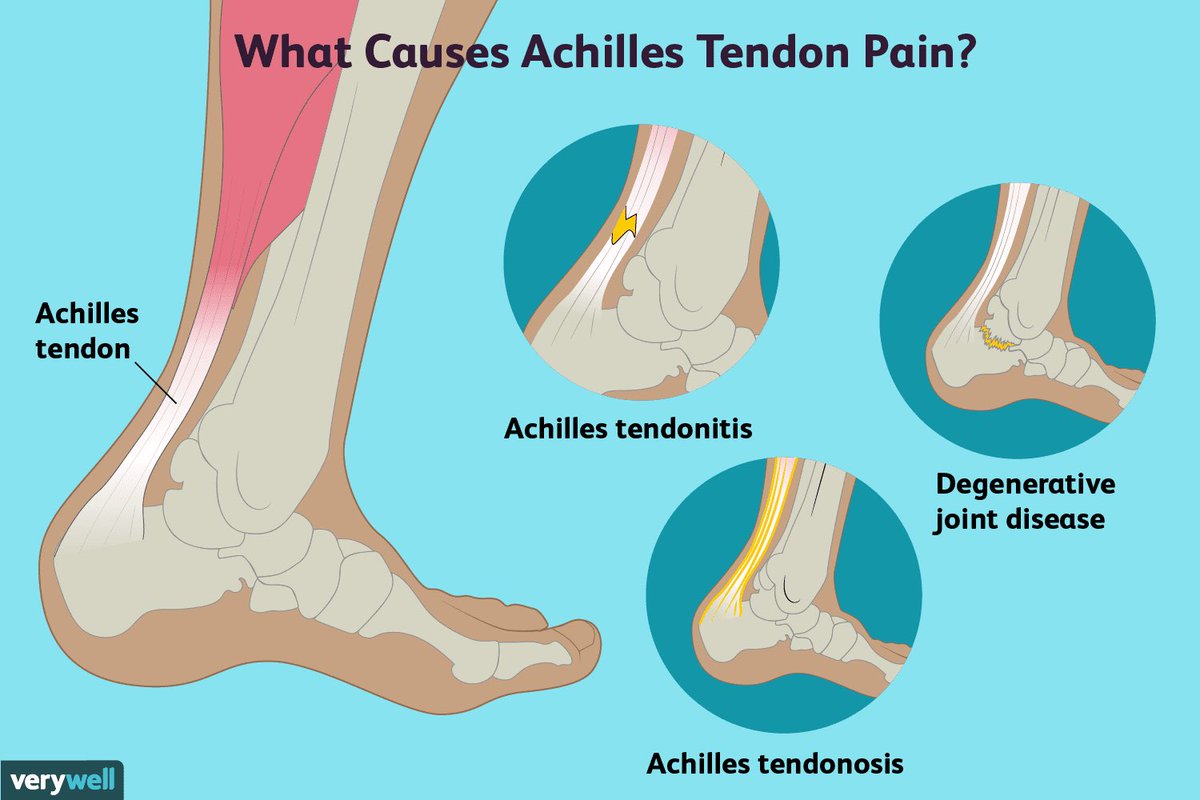
See Achilles Tendon Conditions Signs and Symptoms
Dr. Phillip Walton, Jr. is an orthopedic surgeon specializing in foot and ankle injuries and general orthopedics. He practices with Resurgens Orthopaedics and has several years of experience performing adult reconstruction of the foot and ankle, as well as total ankle replacement surgery.
- 1
Bone Spur. Reed Group MD Guidelines website. http://www.mdguidelines.com/bone-spur Accessed July 8, 2016. - 2
Plantar Fasciitis and Bone Spurs. American Academy of Orthopedic Surgeons website. http://orthoinfo.aaos.org/topic.cfm?topic=A00149&webid=23D4 Last reviewed June 2010. Accessed July 8, 2016. - 3
Insertional Achilles Tendinitis. American Orthopaedic Foot & Ankle Society.https://www.aofas.org/footcaremd/conditions/ailments-of-the-ankle/Pages/Insertional-Achilles-Tendinitis. aspx Accessed May 6, 2016.
aspx Accessed May 6, 2016.
- Share on Facebook
- Share on Pinterest
- Share on Twitter
- Subscribe to our newsletter
Email this article
advertisement
Editor’s Top Picks
Plantar Fasciitis: Initial Treatment Options
Treating a Painful Achilles Tendon
Common Running Injuries: Pain in the Ankle or Back of the Heel
Plantar Fasciitis: Injections and Prolotherapy
Injections and Surgery to Treat Achilles Pain
Nonsurgical, Surgical, and Minimally Invasive Treatment Options for Plantar Fasciitis
Achilles Tendinitis – OrthoInfo – AAOS
Achilles tendinitis is a common condition that occurs when the large tendon that runs down the back of the lower leg becomes irritated and inflamed.
The Achilles tendon is the largest tendon in the body. It connects the calf muscles to the heel bone and is used when you walk, run, climb stairs, jump, and stand on your tip toes. Although the Achilles tendon can withstand great stresses from running and jumping, it is also prone to tendinitis, a condition associated with overuse.
Achilles tendinitis pain can occur within the tendon itself or at the point where it attaches to the heel bone, called the Achilles tendon insertion.
Simply defined, tendinitis (also spelled “tendonitis”) is acute inflammation of a tendon. Inflammation is the body’s natural response to injury and often causes swelling, pain, or irritation. You may also come across the term “tendinopathy,” which is used to describe a condition in which the tendon develops microscopic degeneration as a result of chronic damage over time. Tendinitis, tendinosis, and tendinopathy are all common terms which essentially refer to the same problem.
Achilles tendinitis is different than an Achilles rupture, a condition where the tendon becomes separated off the heel bone or completely torn in half. Achilles tendon rupture typically results from a sudden injury. This article will focus on Achilles tendinitis rather than Achilles tendon rupture.
Achilles tendon rupture typically results from a sudden injury. This article will focus on Achilles tendinitis rather than Achilles tendon rupture.
There are two types of Achilles tendinitis, based on which part of the tendon is inflamed. The two types can occur separately or at the same time.
Noninsertional Achilles Tendinitis
Noninsertional Achilles tendinitis
In noninsertional Achilles tendinitis, fibers in the middle portion of the tendon (above where it attaches to the heel) are affected. Over time, the fibers may begin to break down and develop tiny tears. This can lead to tendon swelling and thickening.
Noninsertional tendinitis more commonly affects younger, active people, especially runners.
Insertional Achilles Tendinitis
Insertional Achilles tendinitis
Insertional Achilles tendinitis involves the lower portion of the tendon, where it attaches (inserts) to the heel bone (also known as the calcaneus).
In both noninsertional and insertional Achilles tendinitis, damaged tendon fibers may calcify (harden) over time. Bone spurs often form on the heel with insertional Achilles tendinitis.
Insertional Achilles tendinitis can occur at any time or activity level, although it is still most common in runners. It is frequently caused by calf muscle tightness, which places increased stress on the Achilles tendon insertion.
Achilles tendinitis is typically not related to a specific injury. The problem results from repetitive stress to the tendon. This often happens when we push our bodies to do too much, too quickly. Other factors can also make a person more likely to develop Achilles tendinitis, including:
- A sudden increase in the amount or intensity of exercise activity. For example, increasing the distance you run every day by a few miles without giving your body a chance to adjust to the new distance may cause irritation and inflammation.
- Tight calf muscles.
 Calf muscle tightness puts extra stress on the Achilles tendon, especially where it inserts into the heel bone.
Calf muscle tightness puts extra stress on the Achilles tendon, especially where it inserts into the heel bone. - Haglund’s deformity. This is a condition in which there is enlargement of the bone on the back of the heel. This can rub on the Achilles tendon and cause inflammation and pain.
Haglund’s deformity is when there is abnormal bone growth near where the Achilles tendon attaches to the heel bone.
To Top
Common symptoms of Achilles tendinitis include:
- Pain and stiffness along the Achilles tendon in the morning
- Pain along the tendon or back of the heel that worsens with activity
- Severe pain the day after exercising
- Thickening of the tendon
- Bone spur formation (insertional tendinitis)
- Swelling that is present all the time and gets worse throughout the day or with activity
- Pain on the back of the heal when you wear shoes
If you have experienced a sudden pop in the back of your calf or heel, you may have torn your Achilles tendon.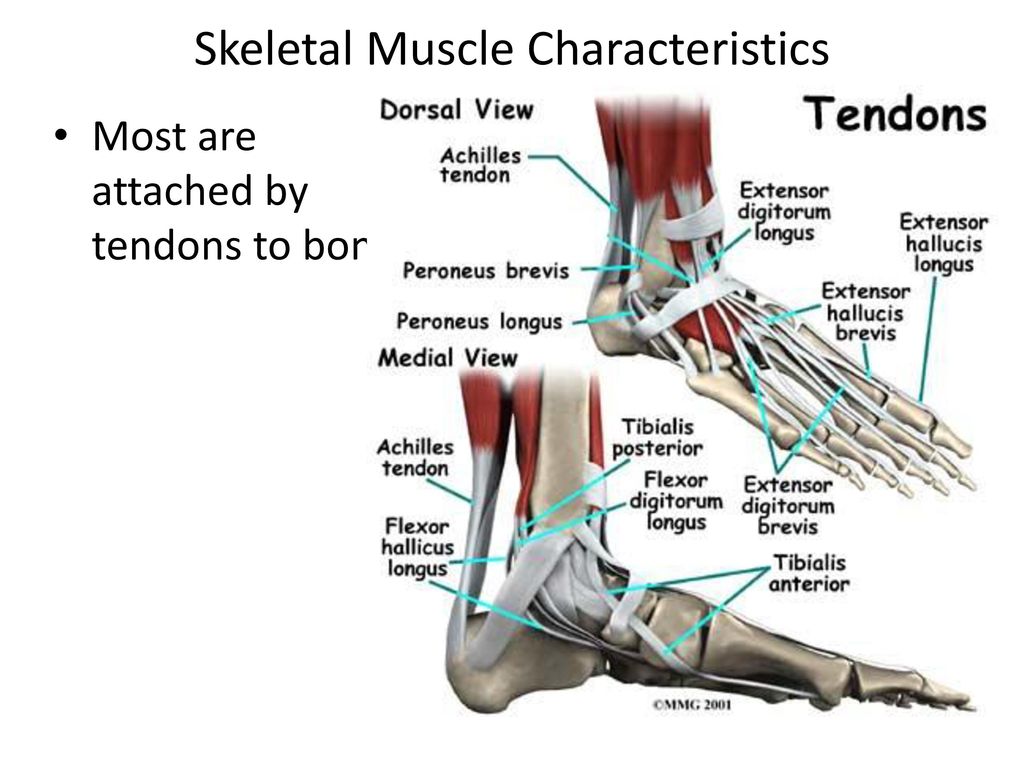 See your doctor immediately if you think you may have torn your tendon.
See your doctor immediately if you think you may have torn your tendon.
After you describe your symptoms and discuss your concerns, the doctor will examine your foot and ankle. The doctor will look for these signs:
- Swelling along the Achilles tendon or at the back of your heel
- Bone spurs or pain near the lower part of the tendon at the back of your heel (insertional tendinitis)
- Pain in the middle of the tendon, (noninsertional tendinitis)
- Heel pain when stretching your calf
- Limited range of motion in your ankle — specifically, a decreased ability to point your toes downward
Your doctor may order imaging tests to help determine if your symptoms are caused by Achilles tendinitis. These tests can also help your doctor ascertain the severity of your Achilles tendinitis.
X-rays
X-rays provide clear images of bones. They can show bone spurs on the back of the heel, which may be present in patients with insertional Achilles tendinitis. In cases of severe noninsertional Achilles tendinitis, X-rays may show calcification in the middle portion of the tendon.
In cases of severe noninsertional Achilles tendinitis, X-rays may show calcification in the middle portion of the tendon.
This X-ray shows calcification within the Achilles tendon in severe noninsertional Achilles tendinitis.
Magnetic Resonance Imaging (MRI)
Although magnetic resonance imaging (MRI) is not necessary to diagnose Achilles tendinitis, it is important for planning surgery if nonsurgical treatment is not effective. An MRI scan can show the severity of the damage in the tendon. If surgery is needed, your doctor will select the procedure based on the amount of tendon damage.
Ultrasound
Ultrasound has grown in popularity among physicians in recent years. It is quicker and less expensive than MRI and may be readily performed in an office setting. However, ultrasound is more operator-dependent than MRI and may yield less consistent results.
To Top
Nonsurgical Treatment
In most cases of Achilles tendinitis, nonsurgical treatment options will provide adequate pain relief, although it may take a few months for symptoms to completely subside.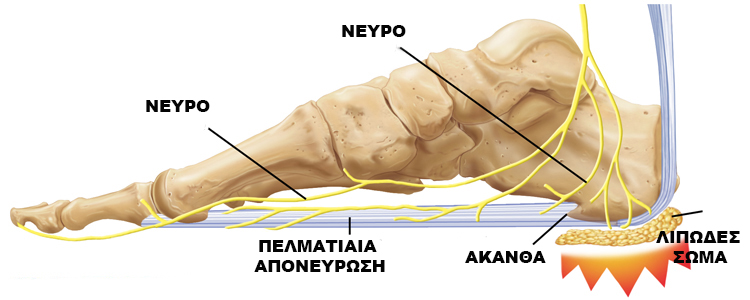 Even with early treatment, the pain may last longer than 3 months.
Even with early treatment, the pain may last longer than 3 months.
The mainstays of nonsurgical treatment include anti-inflammatory pain medications, activity modification, shoe wear modification, and physical therapy exercises.
Rest
The first step in reducing pain is to decrease or even stop the activities that make the pain worse. If you regularly participate in high-impact exercises (such as running), switching to low-impact activities will decrease the amount of stress on the Achilles tendon. Cross-training activities such as biking, elliptical exercise, and swimming are low-impact options to help you stay active. Your doctor may recommend an ankle brace or boot immobilization to help with this step.
Ice
Placing ice on the most painful area of the Achilles tendon is helpful and can be done as needed throughout the day. This can be done for up to 20 minutes at a time, but the ice should be removed sooner if the skin becomes numb.
A foam cup filled with water and then frozen creates a simple, reusable ice pack. After the water has frozen in the cup, tear off the rim of the cup. Then rub the ice on the Achilles tendon. With repeated use, a groove that fits the Achilles tendon will appear, creating a custom-fit ice pack.
Non-steroidal Anti-inflammatory Drugs (NSAIDs)
Anti-inflammatory drugs such as ibuprofen and naproxen reduce pain and swelling. They can help decrease your pain enough to allow you to perform physical therapy exercises as discussed below. They do not, however, reduce the thickening of the degenerated tendon. Using the medication for more than 1 month should be reviewed with your primary care doctor.
Physical Therapy
Physical therapy is very helpful in treating Achilles tendinitis. The following exercises and stretches can help to strengthen the calf muscles and reduce stress on the Achilles tendon.
Calf stretch
Calf stretch. Lean forward against a wall with one knee straight and your heel on the ground. Place the other leg in front, with the knee bent. To stretch the calf muscles and the heel cord, push your hips toward the wall in a controlled fashion. Hold the position for 10 seconds and relax. Repeat this exercise 20 times for each foot. You should feel a strong pull in the calf during the stretch.
Lean forward against a wall with one knee straight and your heel on the ground. Place the other leg in front, with the knee bent. To stretch the calf muscles and the heel cord, push your hips toward the wall in a controlled fashion. Hold the position for 10 seconds and relax. Repeat this exercise 20 times for each foot. You should feel a strong pull in the calf during the stretch.
Eccentric Strengthening. Eccentric strengthening is defined as contracting (tightening) a muscle while it is getting longer. Eccentric strengthening exercises can cause damage to the Achilles tendon if they are not done correctly. At first, they should be performed under the supervision of a physical therapist. Once mastered with a therapist, the exercises can then be done at home. These exercises may cause some discomfort, but it should not be unbearable:
Heel drop
- Bilateral heel drop
Stand at the edge of a stair, or a raised platform that is stable, with just the front half of your foot on the stair. This position will allow your heel to move up and down without hitting the stair. Care must be taken to ensure that you are balanced correctly to prevent falling and injury. Be sure to hold onto a railing to help you balance.Lift your heels off the ground then slowly lower your heels to the lowest point possible. Repeat this step 20 times. This exercise should be done in a slow, controlled fashion. Rapid movement can create the risk of damage to the tendon. As the pain improves, you can increase the difficulty level of the exercise by holding a small weight in each hand.
This position will allow your heel to move up and down without hitting the stair. Care must be taken to ensure that you are balanced correctly to prevent falling and injury. Be sure to hold onto a railing to help you balance.Lift your heels off the ground then slowly lower your heels to the lowest point possible. Repeat this step 20 times. This exercise should be done in a slow, controlled fashion. Rapid movement can create the risk of damage to the tendon. As the pain improves, you can increase the difficulty level of the exercise by holding a small weight in each hand.
- Single leg heel drop
This exercise is performed similarly to the bilateral heel drop, except that all your weight is focused on one leg. This should be done only after the bilateral heel drop has been mastered.
Cortisone Injections
Cortisone, a type of steroid, is a powerful anti-inflammatory medication. While injections can be used in other injuries and conditions, cortisone injections into the Achilles tendon are not recommended because they can cause the tendon to rupture (tear)./cdn.vox-cdn.com/uploads/chorus_asset/file/3929836/foot_achilles_tendon_anatomy01.0.jpg) In fact, research has shown significantly decreased tendon strength after steroid injection.
In fact, research has shown significantly decreased tendon strength after steroid injection.
Other injectable substances, such as platelet-rich plasma (PRP) have been studied for Achilles tendinitis, and several studies on PRP injections have shown improvements in pain. However, more information is needed to determine how effective PRP truly is for this condition.
Night Splinting
Night splinting can provide significant relief for morning pain when you first get out of bed. These removable braces work by holding your foot in place with your toes pointing upward (similar to the calf stretch position) while you sleep. This helps to maintain calf flexibility and decrease the pull of your Achilles tendon on your heel.
Supportive Shoes and Orthotics
Insertional Achilles tendinitis is often relieved by certain shoes and orthotic devices. For example, shoes that are softer or open at the back of the heel can reduce irritation of the tendon. Heel lifts are another option and can decrease the amount of strain off the tendon.
Heel lifts are another option and can decrease the amount of strain off the tendon.
If your pain is severe, your doctor may recommend a walking boot for a short time. This gives the tendon a chance to rest before initiating therapy. However, extended use of a boot is discouraged because it can weaken the calf muscle.
Extracorporeal Shockwave Therapy (ESWT)
This therapy uses either low- or high-energy shockwaves applied to the Achilles tendon to promote healing of the damaged tendon tissue.
- High-energy ESWT can be done in one visit but requires local or general anesthesia.
- Low-energy ESWT consists of 3 to 4 sessions and does not require local anesthesia.
Recent studies have shown improvement in pain and function with ESWT, especially when combined with other nonsurgical treatments such as eccentric exercises. However, more information is needed before strong recommendations can be made for its routine use. One benefit of ESWT is that it is low risk and has few to no complications, so it may be another option to consider before undergoing surgery.
One benefit of ESWT is that it is low risk and has few to no complications, so it may be another option to consider before undergoing surgery.
Surgical Treatment
Surgery for Achilles tendinitis should be considered only if the pain does not improve after 6 months of nonsurgical treatment. The specific type of surgery depends on the location of the tendinitis and the amount of damage to the tendon.
Debridement
Debridement is a term that refers to the removal, or “cleaning up,” of damaged tissue. For insertional Achilles tendinitis, removal of the bone spurs from the heel in addition to the damaged tendon tissue is commonly performed with good outcomes. Once the unhealthy portion of the tendon is removed, the remaining tendon can be reattached to the heel bone. Metal or plastic anchors as well as strong stitches may be placed into the heel bone to help hold the tendon in place.
After debridement and repair, most patients are allowed to walk in a removable boot or cast within 2 weeks, although the timeline depends on the amount of damage to the tendon.
In cases where more than 50% of the Achilles tendon must be removed, the remaining portion of the tendon is not strong enough to function alone. Another tendon must be transferred in order to restore the strength to your foot for pushing off the ground. The tendon that helps the big toe flex down (the flexor hallices longus [FHL] tendon) is most commonly used. This tendon is removed from the bottom of the big toe and reattached to the heel. After this surgery, the big toe is still able to move, and most patients do not notice a change in the way they walk or run.
Gastrocnemius Recession
This is a surgical lengthening of the calf (gastrocnemius) muscles. Because tight calf muscles place increased stress on the Achilles tendon, this procedure is useful for patients who still have difficulty flexing their feet, despite consistent stretching.
In gastrocnemius recession, one of the two muscles that make up the calf is lengthened to increase the motion of the ankle. The procedure can be performed with a traditional, open incision or with a smaller incision and an endoscope — an instrument that contains a small camera. Your doctor will discuss the procedure that best meets your needs. Complication rates for gastrocnemius recession are low but can include nerve damage.
The procedure can be performed with a traditional, open incision or with a smaller incision and an endoscope — an instrument that contains a small camera. Your doctor will discuss the procedure that best meets your needs. Complication rates for gastrocnemius recession are low but can include nerve damage.
Minimally Invasive Surgery
Minimally invasive surgery has been increasing in popularity for treatment of many musculoskeletal conditions. For Achilles tendinitis, it may involve using small incision to place a camera and small instruments through the skin to remove damaged and inflamed Achilles tendon tissue. Other minimally invasive surgeries include using small holes to release parts of the tendon and muscle from the bone. These techniques may become more popular with time, but there is still limited information on their effectiveness. Additionally, they may be less effective in patients with extensive tendon damage.
Outcomes
Results of Achilles tendinitis surgery are generally very good. Studies on tendon debridement have reported return to pre-surgical activity level in up to 75% of patients, with up to a 90% patient satisfaction rate. Gastrocnemius recession has also shown good results, with high rates of reduced pain and improved function after surgery.
Studies on tendon debridement have reported return to pre-surgical activity level in up to 75% of patients, with up to a 90% patient satisfaction rate. Gastrocnemius recession has also shown good results, with high rates of reduced pain and improved function after surgery.
The main factor in surgical recovery is the amount of damage to the tendon. The greater the amount of tendon involved, the longer the recovery period, and the less likely a patient will be able to return to sports activity.
Physical therapy is an important part of recovery. Many patients require up to 12 months of rehabilitation to reach maximum improvement.
Continued pain after surgery may be noted in up to 20% to 30% of patients and is the most common complication. In addition, wound infections can occur and may be difficult to treat in this location on the body.
To Top
| |||||||||||||||||||||||||||
© 2021 – Dr. med. Erich H. Rembeck – Zentrum für Orthopädie, Sportmedizin und Rehabilitation – Imprint | |||||||||||||||||||||||||||
Heel spur, causes, symptoms, treatment
Heel spur is a bony growth in the plantar surface of the calcaneus. Its appearance is associated with constant irritation of the place of attachment to the heel bone of the plantar aponeurosis. This irritation usually occurs with increased physical exertion on the foot.
The main cause of the formation of bone outgrowth in the area of the calcaneus is the constant irritation of the place of attachment to the bone of the tendons or ligaments, in particular, the plantar aponeurosis.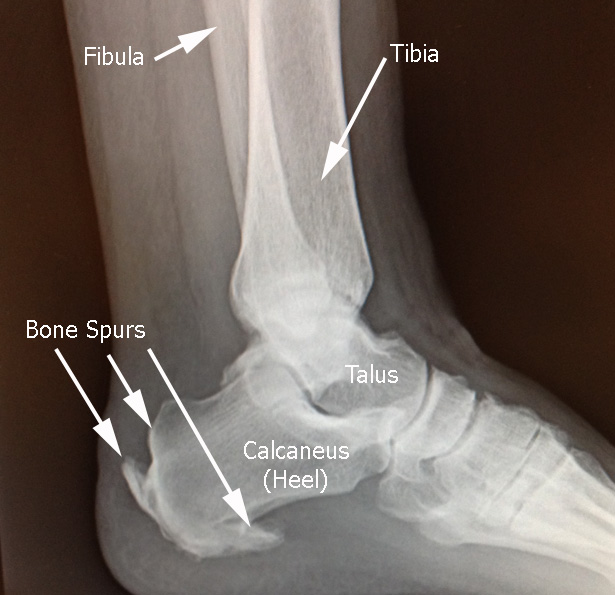 As a result of constant irritation in this area, inflammation occurs. That is what is causing the pain. Gradually, the place of attachment of the inflamed ligament or aponeurosis undergoes “calcification” – that is, as if “impregnated” with calcium salts. In this period, when radiography of the foot, you can see the shadow of the bone growth – osteophyte .
As a result of constant irritation in this area, inflammation occurs. That is what is causing the pain. Gradually, the place of attachment of the inflamed ligament or aponeurosis undergoes “calcification” – that is, as if “impregnated” with calcium salts. In this period, when radiography of the foot, you can see the shadow of the bone growth – osteophyte .
Major risk factors for heel spurs :
- Age over 40 years.
- Comorbidities in the joints of the foot, such as osteoarthritis or rheumatoid arthritis.
- Violation of blood microcirculation in the foot.
- Other degenerative diseases.
Symptoms of a heel spur
Symptoms of a heel spur do not appear immediately after the formation of a bone growth. Due to the proximity of the tendons, a heel spur can cause constant pain in the foot. Heel spur pain is described as similar to toothache.
It should be noted that the pain of a heel spur is not due to the pressure of body weight on the spur itself, but due to inflammation of the soft tissues around the spur.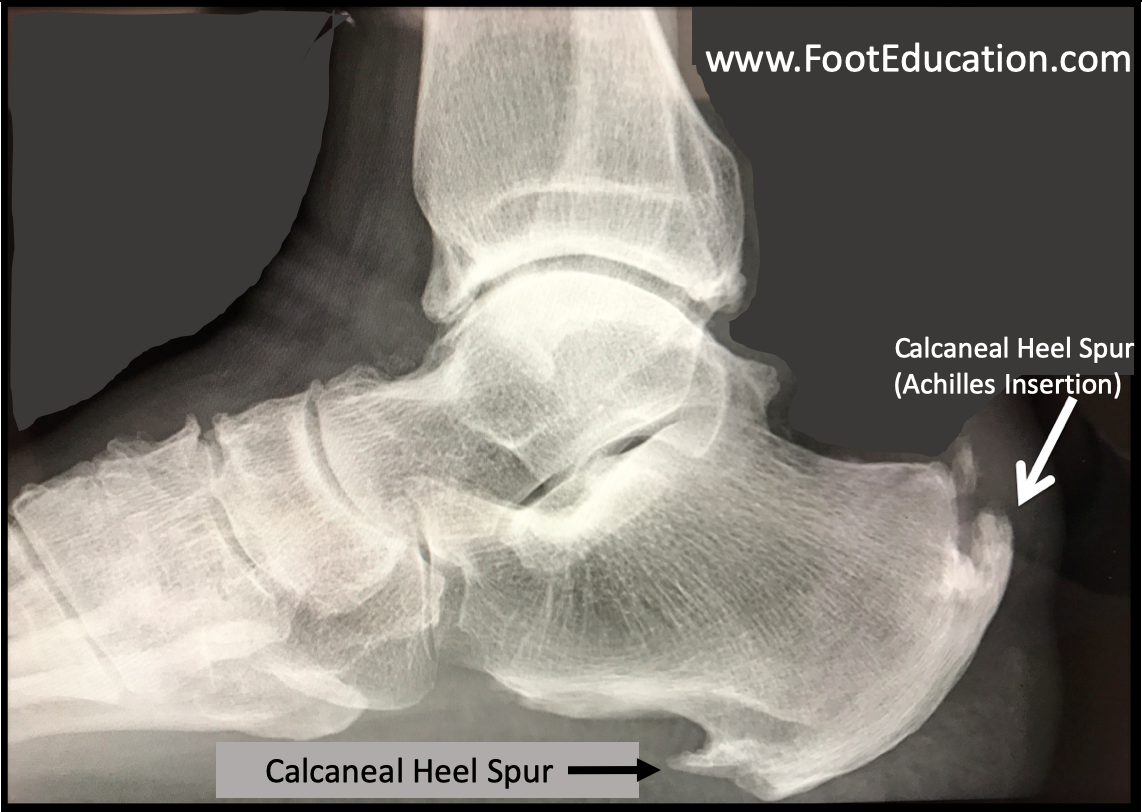 The pressure of these inflamed tissues, for example, when stepping on the heel, leads to sharp pains. Usually, pain most often occurs at the very beginning of walking. This is explained as follows. At rest, the nerves and capillaries in the area of the inflamed tissue, as it were, adapt to the rest of the foot. However, with a sharp start of movement, the vessels and nerves do not have time to adapt to new conditions. As a result, pain occurs.
The pressure of these inflamed tissues, for example, when stepping on the heel, leads to sharp pains. Usually, pain most often occurs at the very beginning of walking. This is explained as follows. At rest, the nerves and capillaries in the area of the inflamed tissue, as it were, adapt to the rest of the foot. However, with a sharp start of movement, the vessels and nerves do not have time to adapt to new conditions. As a result, pain occurs.
Diagnosis
Performed by routine inspection and feel of the sole and heel. At the same time, the most painful point is located. The spur itself is usually not palpable, however, due to chronic inflammation of the soft tissues, their compaction can develop, which can be felt.
X-ray of the foot allows to clarify the diagnosis. In this case, the bone growth is visible on the x-ray.
Heel spur treatment
Treatment of a heel spur often is carried out conservatively and is aimed at three main points:
- Elimination of inflammation of the soft tissues around the spur;
- Prevention of inflammation;
- Elimination of the heel spur itself.

Patients come to the Orthopedics and Sports Injury Clinic of the Zaporozhye Regional Hospital with different problems, but with the same goal – to move freely again without pain and enjoy life. Natalya Borisovna from the Tokmak region was deprived of this happiness by a heel spur.
A woman says that she has suffered from heel spurs for years. I tried to defeat inflammation with the help of physiotherapy, all kinds of medicines and folk remedies, but they did not solve the problem, but only dulled the pain in the joint. Own house in the village, household, work – it became more and more difficult to live in the same rhythm. One day, Natalia Borisovna was suggested to go to Orthopedics and Sports Injury Clinic , one of the best in Ukraine.
After consultation, the diagnosis of heel spur » was confirmed – the bone growth was clearly visible on the x-ray. At the appointment, the specialists of the clinic explained to the woman that the methods she had hoped for were effective only at the very beginning of the disease. And since Natalya Borisovna’s heel spur has been preventing her from living a normal life for years, the operation was the only right decision. Moreover, it was by no means impossible to delay the intervention.
And since Natalya Borisovna’s heel spur has been preventing her from living a normal life for years, the operation was the only right decision. Moreover, it was by no means impossible to delay the intervention.
“The patient needed to have her spur removed as soon as possible. She was at high risk of tearing her Achilles tendon where it attaches to her calcaneus. If we had not carried out the treatment, the growths would have become more and more. Therefore, in order to prevent a complex and risky operation to restore the Achilles tendon, we decided not to waste time and remove the spur,” comments Ivan Zabelin, head of the Orthopedics and Sports Injury Clinic.
Rengen-pred to surgery an X-ray of the foot after surgery
during the intervention of the orthopedist of the clinic using low-traumatic techniques removed the resulting growth, so now nothing will prevent Natalia Borisovna from moving normally. The patient is now feeling much better and is already planning treatment for a heel spur on her second leg.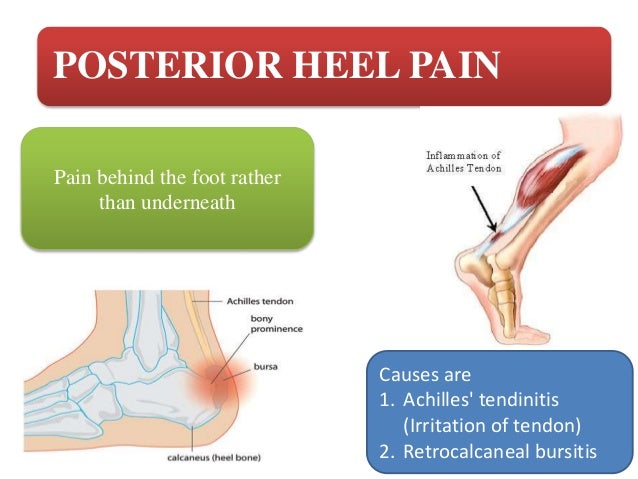

 aspx Accessed May 6, 2016.
aspx Accessed May 6, 2016. Calf muscle tightness puts extra stress on the Achilles tendon, especially where it inserts into the heel bone.
Calf muscle tightness puts extra stress on the Achilles tendon, especially where it inserts into the heel bone. This position will allow your heel to move up and down without hitting the stair. Care must be taken to ensure that you are balanced correctly to prevent falling and injury. Be sure to hold onto a railing to help you balance.Lift your heels off the ground then slowly lower your heels to the lowest point possible. Repeat this step 20 times. This exercise should be done in a slow, controlled fashion. Rapid movement can create the risk of damage to the tendon. As the pain improves, you can increase the difficulty level of the exercise by holding a small weight in each hand.
This position will allow your heel to move up and down without hitting the stair. Care must be taken to ensure that you are balanced correctly to prevent falling and injury. Be sure to hold onto a railing to help you balance.Lift your heels off the ground then slowly lower your heels to the lowest point possible. Repeat this step 20 times. This exercise should be done in a slow, controlled fashion. Rapid movement can create the risk of damage to the tendon. As the pain improves, you can increase the difficulty level of the exercise by holding a small weight in each hand.  In this case, the bony growth on the back of the heel bone presses on the Achilles tendon and on the bursa (retrocalcaneal bursa), resulting in inflammation of both the tendon itself (tendinitis) and the bursa (retrocalneal bursitis). If the disease is in its initial form, then it is advisable to start with conservative ones, i.e. non-surgical measures, eg. with physiotherapy. The main objective of these activities is to relieve pain by unloading the problem area and relieving inflammation.
In this case, the bony growth on the back of the heel bone presses on the Achilles tendon and on the bursa (retrocalcaneal bursa), resulting in inflammation of both the tendon itself (tendinitis) and the bursa (retrocalneal bursitis). If the disease is in its initial form, then it is advisable to start with conservative ones, i.e. non-surgical measures, eg. with physiotherapy. The main objective of these activities is to relieve pain by unloading the problem area and relieving inflammation. Only surgical treatment can help in this case.
Only surgical treatment can help in this case.